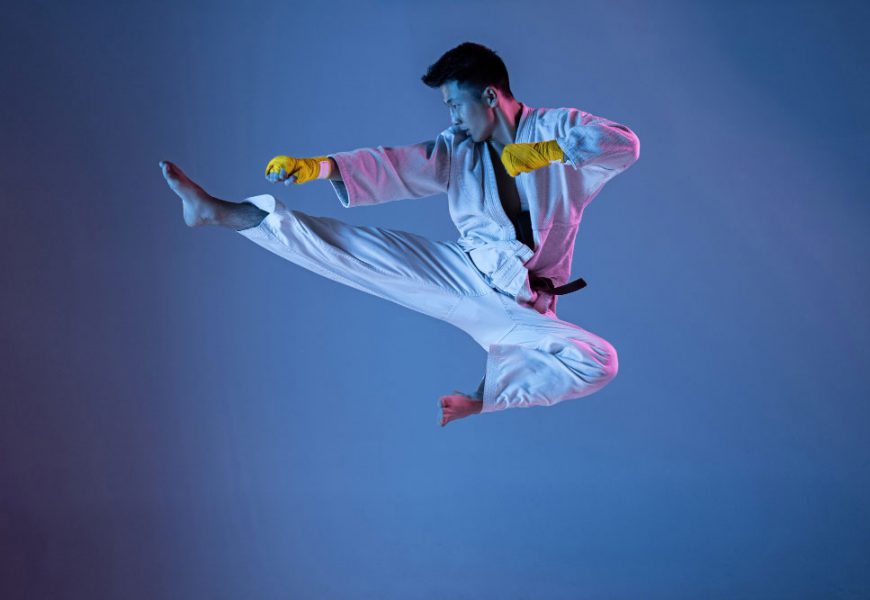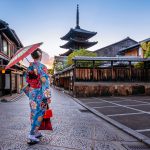The origins of Japanese martial arts can be traced back to the samurai traditions. Samurai warriors were previously expected to master different weapons. But this was later restricted by the Japanese society members.
From Jujutsu to Kendo, among many others, there are various martial arts styles with different techniques today. These types of combat and self-defence techniques, which originally were conceived from martial skills, incorporate various codes and philosophies in every practitioner.
Practised and loved by many people all around the globe, why not familiarise yourself with Japanese martial arts? This article gives insights into some of the most well-known martial arts of Japan.
What Are Martial Arts?
Martial arts involves any or a plethora of combat techniques that are practised for various reasons such as self-defence, mandatory military purpose, entertainment, competition, exercise, etc. There are many types of martial arts ranging from hand-to-hand combats to the use of different weapons.
In Japanese martial arts, the term Gendai budō (Judo, Kendo, Aikido, Kyūdō, karate, etc) focuses on self-improvement, while Koryū bujutsu (Jujutsu, Sumo, Swordsmanship, etc) practices martial skills for combats.
Different Types of Japanese Martial Arts
1. Karate (空手)
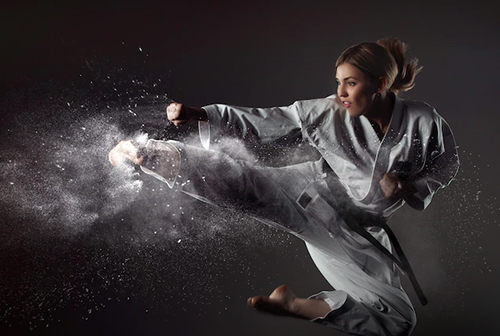
Karate came into existence in the archipelago of Okinawa, Japan at a time when Japanese locals were banned from using weapons. So, they devised a technique called “empty hand” to defend themselves. It is definitely one of the iconic and renowned Japanese martial arts to date.
Karate is distinguished by its straight, levelled and quick kicking, blocking and punching techniques delivered from a stable stance. This slow-motion martial art often involves light or no contact and helps people fight to defend themselves or attack opponents and defeat opponents in competitions.
Karate is so famous worldwide that many movies and television shows, such as The Karate Kid franchise and its television show sequel Cobra Kai have garnered millions of views.
2. Jujutsu (柔術)
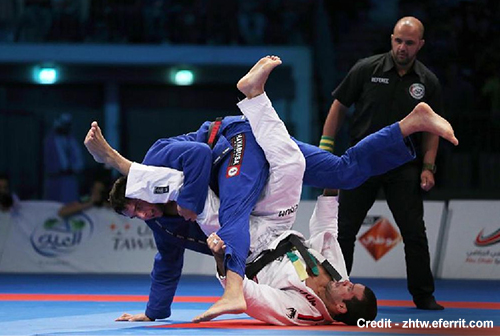
Jujutsu, which translates to “Soft Skills”, is an ancient martial art from Japan wherein a person, who has a small or no weapon, fights his opponent (either in an offensive or defensive manner) to subdue him. The techniques include striking, throwing, or retraining the opponent and in some cases, using minor weapons.
The core philosophy of Jujutsu, which is one of the best martial arts in the world, is to exploit the opponent’s weaknesses or force against them so as to not confront them with your own force but rather use their force to counterattack them.
Today, people practise many forms of jujutsu. Be it modern or ancient techniques. In fact, other martial arts such as karate, judo and aikido have many jujutsu methods incorporated into them.
3. Judo (柔道)
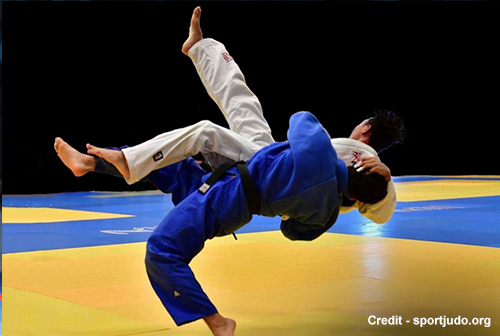
Founded by Professor Kano Jigoro in the 19th century, Judo, which can be translated as “way of softness”, is a grappling-based martial art. It is one of the most common martial arts practised by people around the world and is a sport loved by many to the point that it has been an Olympic sport in each Olympiad since 1964.
Judo techniques can be divided into three main parts:
- Nage Waza: Throwing techniques such as large outer reap, one-arm shoulder throw or sweeping hip throw, etc.
- Katame Waza: Grappling techniques such as cross lock, top four-corner hold or scarf hold, etc.
- Ate Waza: Striking techniques such as throat strike, elbow blow, uppercut, rear elbow strike, high Front kick, etc. However, due to the damage it can do to the participants, ate waza is not commonly used.
4. Aikidō (合氣道)
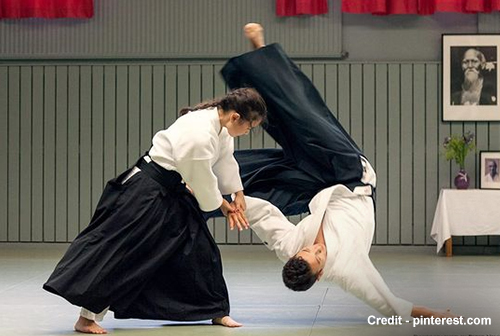
Practised in over 140 countries, Aikidō is a modern Japanese martial art designed by a famous Japanese martial artist Morihei Ueshiba, who wanted to teach people how to defend themselves without injuring the attackers. Aikido can be translated into the “way of combining forces”.
In Aikido, the goals of the fitness training include flexibility, the right movement of the joints, controlled relaxation, and endurance. The fighting style in this innovative martial art is focused on achieving control over one’s mind as well as body to apprehend the opponent’s attack.
Some of the basic techniques of Aikido include the following:
- Ikkyō – Elbow control (applying pressure to the writs).
- Nikyō – Pronating wrist lock
- Sankyō – Rotational wrist lock
- Yonkyō – Shoulder control
- Yonkyō – Elbow control (applying pressure on the elbow)
- Rokkyo – Arm Control
- Shihōnage – Four-corner throw
- Kotegaeshi – Forearm return
- Kokyūnage – Breath throw
- Iriminage – Entering throw
- Tenchinage – Heaven-and-earth throw
- Koshinage – Hip throw
- Jūjinage – Figure-ten throw
- Kaitennage – Rotary throw
5. Kyūdō (弓道)
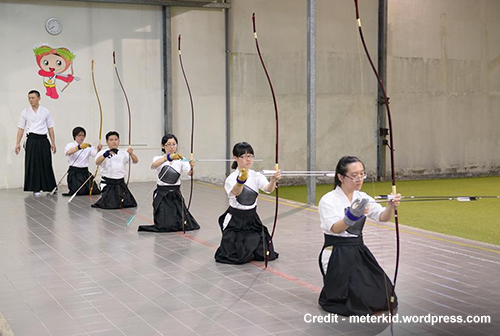
Kyūdō, which is also referred to as the “way of the bow”, is a refined Japanese martial art of archery, with thousands of people practising it worldwide. In 2005 alone, the International Kyudo Federation consisted of 132,760 members. This art requires discipline, good eye-hand coordination, focus and patience.
Dating back to the 14th century, the archery tradition of Japan was first meant for spiritual training and combat purposes. In Kyūdō, the bows are often exquisitely designed and are an important part of Japanese culture. Practitioners of this sophisticated martial art of archery are known as yumihiki, while the highly skilled ones are called kyūdōka.
6. Sumo (相撲)
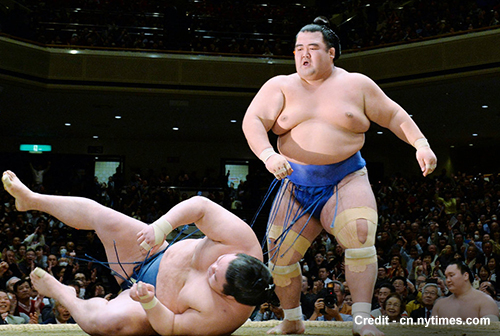
Considered by most as the national game of Japan, Sumo is, which means “striking one another”, is modern Japanese martial arts wherein two wrestlers (rikishi) fight to send their opponent out of the ring or force their body to touch the ground by means of shoving, pushing or throwing. Japan is the only country where sumo wrestling is professionally practised.
As wrestlers fight to see who lasts longer in the ring and who is the last man standing, weight plays a crucial role in this game. Kinjite (illegal moves) include kicking, strangulation, punching, hair pulling, eye-poking, etc.
The two most common techniques used by rikishis are:
- Yotsu-zumō – forcing the other out by grabbing the belt.
- Oshi-zumō – Gripping the other firmly to force him out of the ring.
7. Naginatajutsu (長刀術)
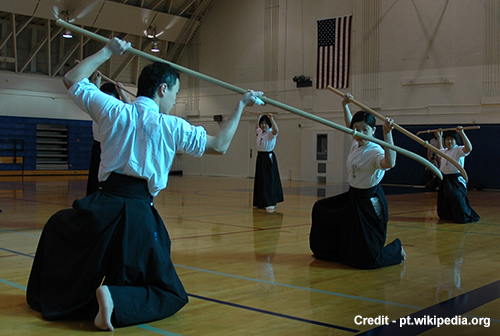
Naginatajutsu, or simply naginata is a Japanese martial art of naginata, which is a pole used as a weapon. The pole weapons each have a blade attached to them and are wielded as swords. This allows the practitioners to attack with their naginata from long-range and difficult positions, such as while riding a horse.
Many women in Japan practice Naginatajutsu because, during the Edo period (between 1603 and 1867), ladies in waiting were trained to use the naginata. This is not to say that male warriors did not practice Naginatajutsu. In fact, samurais widely used it during the early medieval period.
This martial art of wielding the pole weapon focuses on balance, speed and posture. Today, the techniques taught to each student differ based on their level.
8. Kendo (剣道)
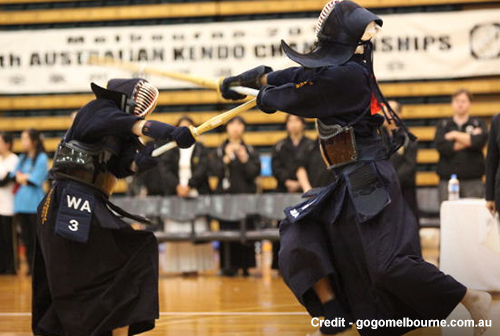
Kendo, which means ‘way of the sword’, is a Japanese martial art of using shinai (bamboo swords), which was once used by samurai. Participants in this sport wear helmets and other protective gear to protect themselves from injury as the purpose of the game is to strike the opponent in the Do (body), Men (head), Kote (wrist) and Tsuki (troat).
As a physical and mental sport, kendo aims to mould the practitioner’s body and mind and develop a strong spirit through structured training. Played between two people, whenever one of the opponents struck, he would shout “Kiai” to show their spiritual steadiness.
The two main techniques of Kendo include:
- Shikake-waza – Initiating the attack
- Oji-waza – Counter-attacking
9. Okinawa Kobudō (沖縄古武道)
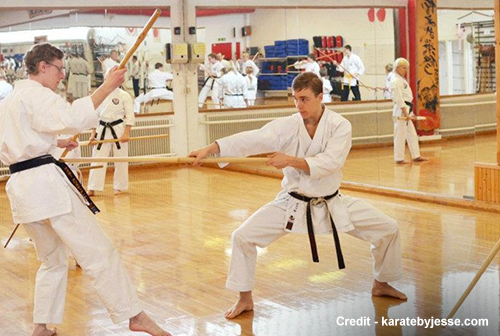
Kobudō, which means “old martial way of Okinawa”, is a Japanese martial art of Okinawan weapon systems. It is believed that when the Satsuma samurai clan prohibited the peasants from using weapons during the Japanese occupation of Okinawa, the locals became defenseless so they had to secretly make weapons from any tools they could use, such as farming implements and household items.
Some of the tools included tinbe-rochin (shot spear and shield), bō (six-foot stick/staff), hanbō (middle-length stick/staff), tambo (short staff/stick), nunchaku (rope or metal with sticks connected to each end), tekko (knuckledusters), tonfa (handled club), surujin (weighted rope or chain) and sai (a fork-like weapon)
10. Iaidō (居合道)
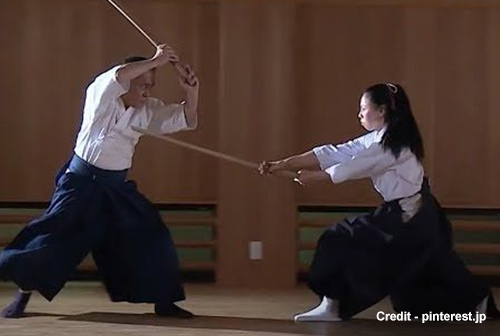
Iaidō is a sword-based Japanese martial art wherein a person wields the katana, a Japanese long sword. The purpose of this practice is for the katana holder to be alert to draw his sword as quickly as possible when he is suddenly attacked. Beginners are usually given wooden stick swords, and many practitioners use the iaitō (blunt-edged swords). Shinken swords are used by those who have more experience.
In Iaidō, a lone swordsman wields his sword, adhering to specific rules of movement. The purpose is not to fight an opponent but rather to learn to perfect one’s character through a commitment to martial arts.
The four main components of Iaido are:
- Nuki-tsuke – Drawing the sword from the scabbard.
- Kiri-tsuke – Cutting or striking with the sword.
- Chiburi – Cleaning blood from the blade.
- Noto – Putting the sword back in the scabbard.
11. Shorinji Kempo (少林寺拳法)
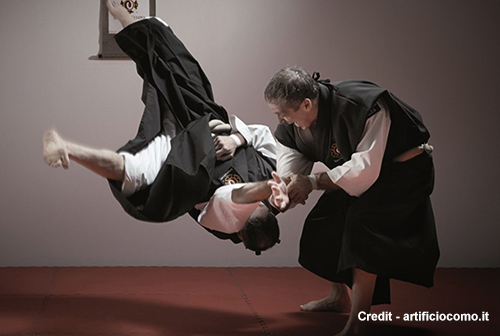
Shorinji Kempo is a Japanese martial art introduced by Doshin So in 1947 to teach practitioners self-defence. An altered version of Shaolin Kung Fu, it is also self-improvement training and now has close to 1.5 million practitioners worldwide.
This holistic Japanese martial practice consists of three training methods, which are-
- self-defence training,
- health training and
- mental training.
The two main techniques are categorised as Gōhō, which includes striking, kicking and blocking and Jūhō, which includes dodging and joint locking.
The purpose of the Shorinji Kempo is to teach practitioners how to establish themselves and encourage mutual affection.
12. Iaijutsu (居合術)
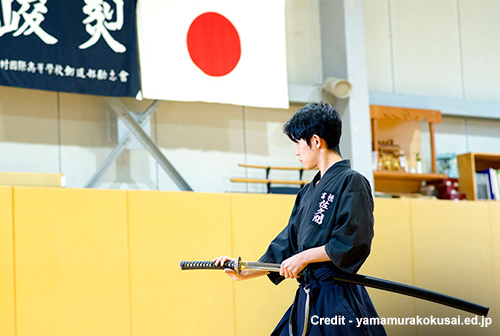
Dating back to as early as the second century B.C Iaijutsu is the art of quickly drawing a sword. The purpose of this combative sword-drawing art is to be able to draw the sword as quick and swift as possible for counterattacks.
The two starting positions used by warriors when executing this technique are:
- Iai-goshi – Low crouching position
- Tachi-a Standing position
13. Sōjutsu (槍術)
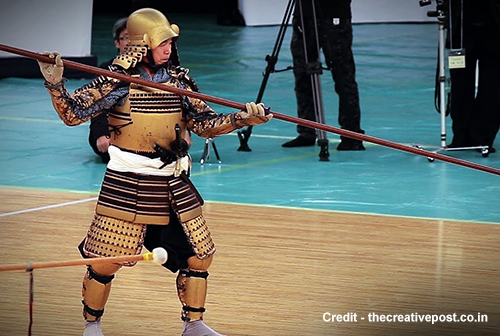
Sōjutsu, which means “art of the spear”, is a Japanese martial art involving the use of Yari (a Japanese spear) in fights. As this spear was cheap to produce and easy to use without much training, it was popularly used during the feudal period of Japan.
The heads of the spears were eventually modified into different variations so that warriors would be able to use them on horseback to slash their opponents or thrust the pointed end at them.
Today, there are only a few schools worldwide that teach the art of Sōjutsu.
What are the Benefits of Martial Arts?
While there are many reasons why martial arts are beneficial for your well-being, allow us to list down and explain some of the most significant ones.
1. Physical Benefits
- If you are looking for a way to exercise while still entertaining yourself, martial art is a way to do it. It will give a full-body workout. It will help you in burning calories, which will further help you in losing weight and excess fatty tissue.
- As most martial arts involve high-intensity (HIIT) workouts, practising martial arts such as judo or jiu-jitsu will help in improving your cardiovascular health. According to research conducted in 2018 (https://www.scielo.br/j/rbme/a/m47StcsHnd7FcDsT55hCvyz/?lang=en&format=pdf), 16 weeks of martial arts training significantly decreased the risk of cardiovascular disease.
- Whether you are flexible or not, one thing is for sure – martial arts will help you improve your flexibility as some techniques require a lot of stretching. Being more flexible will allow you to attack or move faster and effectively, thus reducing the risks of you getting injured while training or sparring.
- You will gradually learn to balance and control your body.
- Your agility and mobility will improve as well as some techniques will help you in developing the fast-twitch fibre, also known as white fibres, in your muscles.
2. Mental Benefits
- Working out releases endorphins and reduces stress hormones, which are natural painkillers. Together, these help in making your mind and body feel relaxed and in control of your life.
- When you practice martial arts, you will gain confidence because you will learn how to defend yourself physically and mentally. Moreover, the more you work out, the more you will shape your body to your desired figure, which will help in boosting your self-esteem.
- Martial arts will train you to focus on a single or repetitive task until you ace them. This will help you in increasing your ability to focus.
- When you focus on a certain task, it helps in growing your neural synapses and pathways more strongly. This helps you in improving your memory.
3. Social Benefits
- Martial arts training will help you in building your character. As mentioned earlier, it helps in proving your confidence and self-esteem, and these two are essential for building character. You will be more outgoing.
- If you are an introvert who does not know how to socialise well with other people, joining a martial arts class would be a great practice. You will meet many people from different backgrounds there and as you already have a common interest with them (martial arts, duh!), you will be able to talk about at least something. Gradually, you will learn to improve your communication and social skills. Even if you are new to the city and you want to make new friends, a martial art class will point you to like-minded people.
Conclusion: In a world where one’s well-being and safety should be a priority, martial arts training is a must. If you ever find yourself in a situation where you need to defend yourself physically, you should be able to know-how. Moreover, it will help you in learning to be aware of your surroundings at all times and think and act accordingly.
We hope this article helps you in understanding the different styles of Japanese martial arts and helps you in deciding which one to choose.
We will leave you here with our best wishes.

